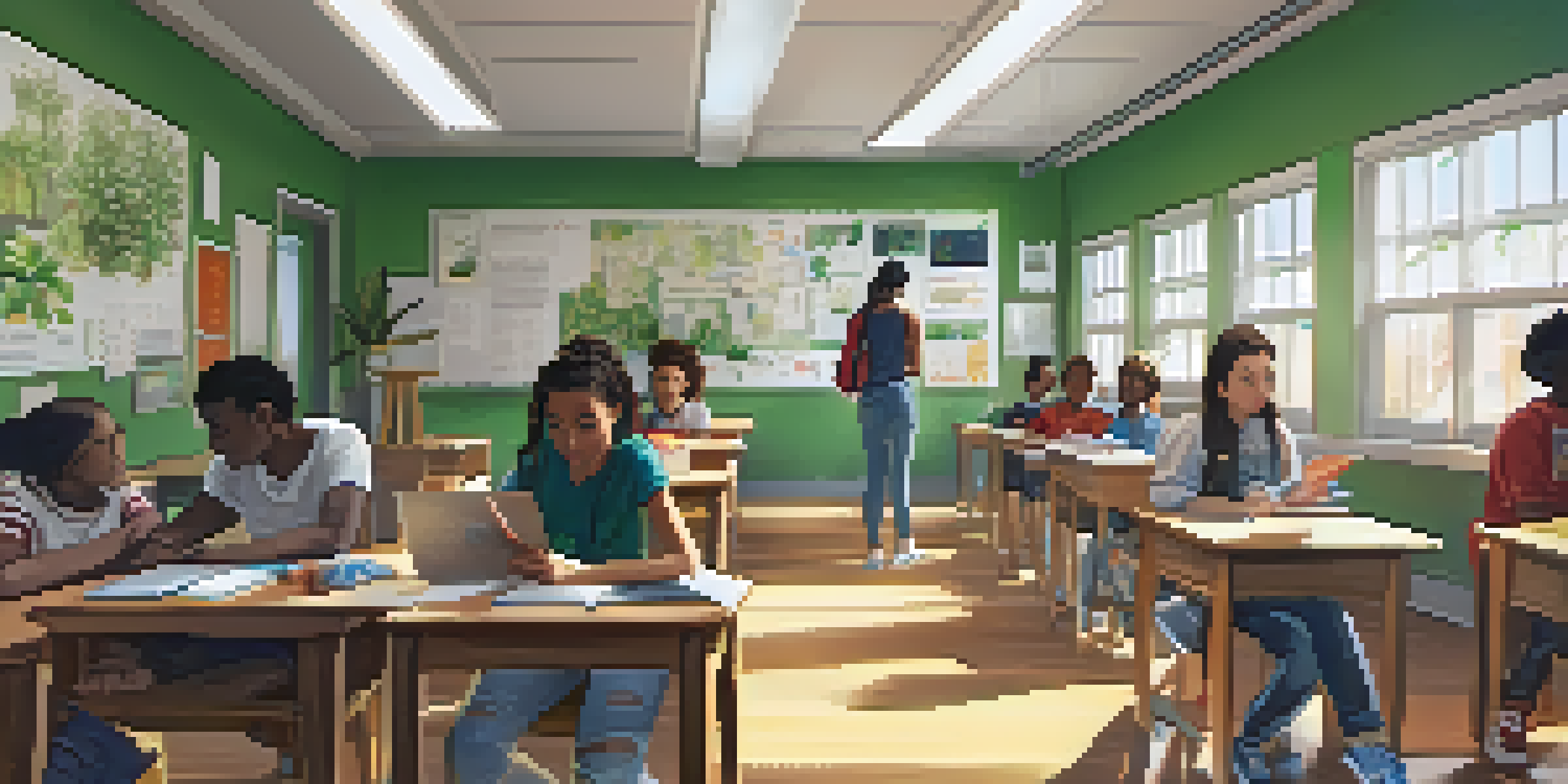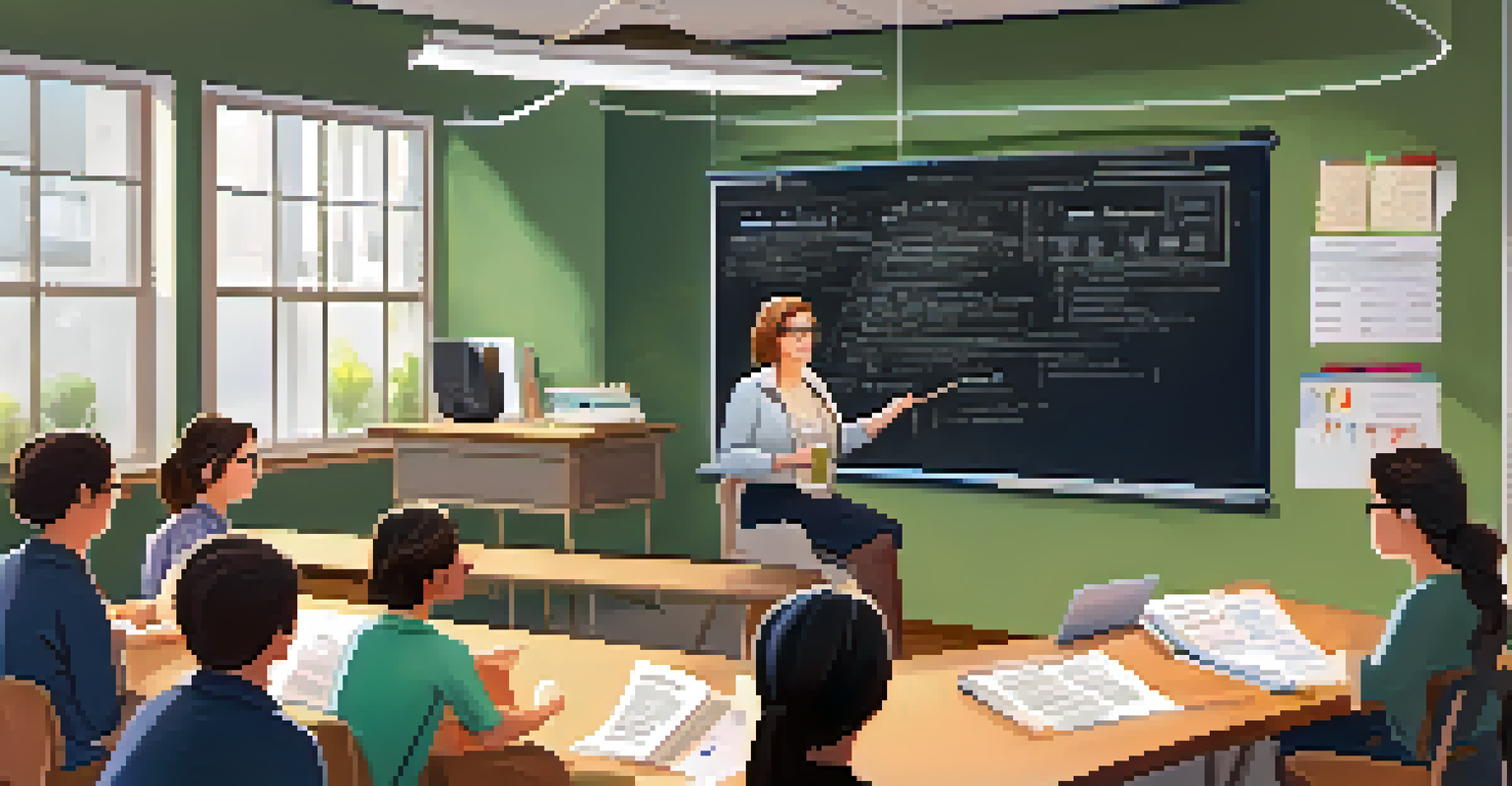Using Video Assessments to Evaluate Student Understanding

What Are Video Assessments and Their Purpose?
Video assessments are tools that allow students to demonstrate their understanding of a subject through recorded presentations or responses. Unlike traditional tests, these assessments can showcase a student's thought process, creativity, and communication skills. This method not only evaluates knowledge but also encourages students to engage deeply with the material.
The ability to simplify means to eliminate the unnecessary so that the necessary may speak.
For example, a student might create a video explaining a scientific concept, illustrating their understanding far beyond what might be captured on a multiple-choice test. The use of video can make assessments more interactive and engaging, fostering a sense of ownership over their learning. Additionally, it provides teachers with a richer context for evaluation.
Ultimately, video assessments serve the dual purpose of assessment and learning. They allow students to synthesize information and articulate their thoughts clearly, which can enhance retention and understanding. As education continues to evolve, integrating technology like video assessments can bridge the gap between traditional evaluation methods and modern learning needs.
Benefits of Using Video Assessments
One of the key benefits of video assessments is the flexibility they offer. Students can record their responses at their own pace, allowing them to take the time needed to express their understanding fully. This can reduce the pressure often associated with timed assessments, leading to a more authentic representation of their knowledge.

Moreover, video assessments cater to various learning styles. Visual and auditory learners may thrive when given the opportunity to express their understanding through multimedia formats. This inclusivity ensures that all students have a fair chance to demonstrate what they know in a way that resonates with their unique learning preferences.
Video Assessments Enhance Learning
These assessments allow students to showcase their understanding creatively, promoting deeper engagement with the material.
Additionally, video assessments can promote creativity. Students can utilize different formats—like storytelling, demonstrations, or role-playing—making the learning process more dynamic and engaging. This not only solidifies their grasp of the subject but also builds skills that are valuable in real-world situations, such as public speaking and critical thinking.
Challenges of Implementing Video Assessments
While video assessments offer numerous benefits, they also come with challenges. One significant hurdle is access to technology. Not all students may have the necessary devices or reliable internet connections to create and upload videos, which can create disparities in assessment opportunities.
Education is not the filling of a pail, but the lighting of a fire.
Another challenge lies in the assessment criteria. Teachers must develop clear, objective rubrics to evaluate video submissions effectively. Without well-defined criteria, it can be challenging to ensure consistency and fairness in grading, potentially leading to confusion among students regarding expectations.
Lastly, there can be concerns about privacy and security. Educators need to navigate the complexities of sharing and storing video content, especially when it involves minors. Establishing guidelines around consent and data protection is crucial to creating a safe environment for both students and teachers.
Integrating Video Assessments into Curriculum
To successfully integrate video assessments into the curriculum, educators should start by aligning them with learning objectives. This alignment ensures that video assignments are not just add-ons but integral to the learning experience. By clearly linking assessments to specific outcomes, teachers can provide context and purpose to students.
Educators might also consider introducing video assessments gradually. Starting with simpler tasks, such as recording a brief introduction or summarizing a chapter, can help students become comfortable with the format. Once they gain confidence, more complex assessments can be introduced, allowing for deeper exploration of the subject matter.
Flexibility Supports Diverse Learners
Video assessments can cater to different learning styles, providing students the freedom to express their knowledge in a way that resonates with them.
Collaboration among students can enhance the integration process. Group projects can provide opportunities for peer feedback and creativity, making the experience more enjoyable and less intimidating. This collaborative approach not only fosters teamwork but also helps students learn from one another, enriching the overall educational experience.
Best Practices for Conducting Video Assessments
To maximize the effectiveness of video assessments, educators should establish clear guidelines for submissions. Providing students with a checklist can help them understand the expectations and reduce anxiety. This checklist might include technical requirements, content guidelines, and tips for effective presentation.
Encouraging self-reflection is another best practice. After completing a video assessment, students can be asked to reflect on their learning process and what they would do differently next time. This not only reinforces their understanding but also cultivates a growth mindset, where students view challenges as opportunities for improvement.
Finally, providing constructive feedback is essential. Teachers should aim to highlight strengths while also offering specific suggestions for growth. This balanced feedback can motivate students to continue improving their skills, making them feel valued and engaged in their learning journey.
Assessing Student Understanding through Peer Evaluation
Peer evaluation can be a powerful tool when using video assessments. By allowing students to review and provide feedback on each other's videos, they gain valuable insights into different perspectives and approaches. This process not only enhances their critical thinking skills but also fosters a sense of community within the classroom.
Moreover, peer evaluation encourages students to engage more deeply with the material. As they watch their classmates’ videos, they may notice concepts they hadn't fully grasped before, prompting further exploration and understanding. This reciprocal learning can lead to richer discussions and collaborative learning experiences.
Future of Education Embraces Innovation
As technology advances, video assessments are set to become more accessible and effective, helping educators meet diverse learning needs.
However, it's crucial to provide students with proper training on how to give constructive feedback. Teaching them how to highlight both strengths and areas for improvement can enhance their evaluation skills. This not only benefits the current assessment but also equips them with valuable skills for future collaborative endeavors.
The Future of Video Assessments in Education
As technology continues to evolve, the future of video assessments looks promising. With advancements in tools and platforms, creating and sharing video content is becoming easier and more accessible. This evolution opens up exciting possibilities for educators to explore innovative ways to assess student understanding.
For instance, the integration of artificial intelligence can streamline the assessment process, offering personalized feedback and suggestions based on each student’s performance. This tailored approach could help address individual learning needs more effectively, ensuring that every student receives the support they require.

Ultimately, the future of education lies in embracing diverse assessment methods. Video assessments are just one way to create a more engaging and inclusive learning environment. By continuing to adapt and innovate, educators can ensure that students are not only evaluated on their knowledge but also equipped with the skills needed for the future.